Top Crypto Trading Platforms in 2025







%201.svg)
%201.svg)
Big news: We’re cranking up the heat on AI-driven crypto analytics with the launch of the Token Metrics API and our official SDK (Software Development Kit). This isn’t just an upgrade – it's a quantum leap, giving traders, hedge funds, developers, and institutions direct access to cutting-edge market intelligence, trading signals, and predictive analytics.
Crypto markets move fast, and having real-time, AI-powered insights can be the difference between catching the next big trend or getting left behind. Until now, traders and quants have been wrestling with scattered data, delayed reporting, and a lack of truly predictive analytics. Not anymore.
The Token Metrics API delivers 32+ high-performance endpoints packed with powerful AI-driven insights right into your lap, including:
Getting started with the Token Metrics API is simple:
At Token Metrics, we believe data should be decentralized, predictive, and actionable.
The Token Metrics API & SDK bring next-gen AI-powered crypto intelligence to anyone looking to trade smarter, build better, and stay ahead of the curve. With our official SDK, developers can plug these insights into their own trading bots, dashboards, and research tools – no need to reinvent the wheel.
%201.svg)
%201.svg)
The prediction revolution is transforming crypto investing in 2025. From AI-powered price prediction platforms to blockchain-based event markets, today's tools help investors forecast everything from token prices to election outcomes with unprecedented accuracy.
With billions in trading volume and cutting-edge AI analytics, these platforms are reshaping how we predict, trade, and profit from future events. Whether you're forecasting the next 100x altcoin or betting on real-world outcomes, this comprehensive guide explores the top prediction tools dominating 2025.
Before diving in, it's crucial to distinguish between two types of prediction platforms:
Both serve valuable but different purposes. Let's explore the top tools in each category.
Token Metrics - AI-Powered Crypto Intelligence Leader
Token Metrics stands as the premier AI-driven crypto research and investment platform, scanning over 6,000 tokens daily to provide data-backed predictions and actionable insights. With a user base of 110,000+ crypto traders and $8.5 million raised from 3,000+ investors, Token Metrics has established itself as the industry's most comprehensive prediction tool.
Unlike basic charting tools or single-metric analyzers, Token Metrics combines time series data, media news, regulator activities, coin events like forks, and traded volumes across exchanges to optimize forecasting results. The platform's proven track record and comprehensive approach make it indispensable for serious crypto investors in 2025.
Investors and traders seeking AI-powered crypto price predictions, portfolio optimization, and early altcoin discovery.
1. Polymarket - The Largest Decentralized Prediction Market
Polymarket dominates the event prediction market space with unmatched liquidity and diverse betting opportunities.
What Sets It Apart: Polymarket proved its forecasting superiority when it accurately predicted election outcomes that traditional polls missed. The platform's user-friendly interface makes blockchain prediction markets accessible to mainstream audiences.
Best For: Event outcome betting, political predictions, sports betting, and crypto price speculation through binary markets.
2. Kalshi - The CFTC-Regulated Powerhouse
Kalshi has surged from 3.3% market share last year to 66% by September 2025, overtaking Polymarket as the trading volume leader.
Recent Developments: Kalshi hired John Wang as Head of Crypto in August 2025 to drive blockchain integration, with plans to be on "every major crypto app and exchange within 12 months." The platform secured a massive $185 million Series C funding round and partnered with Robinhood for sports market expansion.
Best For: U.S. residents seeking regulated prediction markets with crypto deposit options and diverse event contracts.
3. Drift BET - Solana's Speed Champion
For traders demanding instant settlement and minimal fees, Drift BET represents the cutting edge of prediction markets on Solana.
Why It Matters: By leveraging Solana's near-instant transaction finality, BET by Drift solves many scalability issues faced by Ethereum-based prediction markets, with low transaction fees making smaller bets feasible for wider audiences.
Best For: Solana-native traders and users prioritizing speed and low costs.
4. Augur - The Pioneering Protocol
Launched in 2018, Augur was the first decentralized prediction market, pioneering blockchain-based forecasting and innovative methods for settlement secured by the REP token.
Legacy Impact: Augur v1 settled around $20 million in bets—impressive for 2018-19. While the DAO has dissolved, Augur's technological innovations now permeate the DeFi sphere.
Best For: Crypto purists seeking complete decentralization and censorship resistance.
5. Gnosis - The Infrastructure Powerhouse
With a market cap of $463 million, Gnosis is the biggest prediction market project by market capitalization.
Ecosystem Approach: Founded in 2015, Gnosis evolved into a multifaceted ecosystem encompassing decentralized trading, wallet services, and infrastructure tools beyond mere prediction markets.
Best For: Developers and platforms building custom prediction market applications.
Smart investors often use Token Metrics for identifying which cryptocurrencies to invest in, then leverage prediction markets like Polymarket or Kalshi to hedge positions or speculate on specific price targets and events.
Example Strategy:
This combines the best of AI-driven price prediction with market-based event forecasting.
Market Growth Trajectory: The prediction market sector is projected to reach $95.5 billion by 2035, with underlying derivatives integrating with DeFi protocols.
Key Growth Drivers:
For Crypto Investors: Use Token Metrics to identify high-potential tokens before they pump. Access AI-generated buy/sell signals for portfolio management. Discover narrative-driven investment opportunities early.
For Event Traders: Hedge crypto positions using prediction markets. Speculate on regulatory outcomes, exchange listings, or network upgrades. Trade sports and political events for diversified income.
For Analysts & Institutions: Aggregate market sentiment data for research. Access real-time forecasting for economic indicators. Build custom trading strategies using API integrations.
For Price Prediction Platforms: No prediction tool is 100% accurate; past performance doesn't guarantee future results. AI models perform best with sufficient historical data. Market manipulation and black swan events can invalidate predictions.
For Prediction Markets: Regulatory uncertainty remains in many jurisdictions. Liquidity challenges can create volatility. Oracle failures could compromise settlement integrity. Tax implications require careful record-keeping.
What's Coming: Expect deeper AI agent integration, automated portfolio management, and enhanced moonshot discovery as machine learning models become more sophisticated.
Prediction Market Expansion: Kalshi aims to integrate with every major crypto app within 12 months, while tokenization of positions and margin trading will create new financial primitives.
Cross-Platform Integration: Future platforms will likely combine Token Metrics-style AI prediction with Polymarket-style event markets in unified interfaces.
DeFi Integration: The prediction market derivatives layer is set to integrate with DeFi protocols to create more complex financial products.
The era of blind speculation is over. Between AI-powered platforms like Token Metrics analyzing thousands of data points per second and blockchain-based prediction markets aggregating collective wisdom, today's investors have unprecedented tools for forecasting the future.
Token Metrics leads the charge in crypto price prediction with its comprehensive AI-driven approach, while platforms like Polymarket and Kalshi dominate event-based forecasting. Together, they represent a new paradigm where data, algorithms, and collective intelligence converge to illuminate tomorrow's opportunities.
Whether you're hunting the next 100x altcoin or betting on real-world events, 2025's prediction platforms put the power of foresight in your hands. The question isn't whether to use these tools—it's how quickly you can integrate them into your strategy.
The future is visible. Are you ready to profit from it?
Disclaimer: This article is for informational purposes only and does not constitute financial advice. All investing involves risk, including potential loss of capital. Price predictions and ratings are provided for informational purposes and may not reflect actual future performance. Always conduct thorough research and consult qualified professionals before making financial decisions.
%201.svg)
%201.svg)
Understanding how to efficiently manage exposure in the dynamic world of cryptocurrency can seem daunting. Crypto indices provide a structured approach, helping investors and traders maintain diversified exposure without constant oversight. This article explores what crypto indices are, how they work, and why their rebalancing strategies are crucial in 2025.
A crypto index is a rules-based basket of digital assets that tracks a specific set of cryptocurrencies, such as the top-100 by market capitalization. These indices are designed to reflect broad market trends while reducing the complexity of individual asset management. They typically rebalance periodically to maintain consistent exposure, adapting to market fluctuations over time.
The core mechanism involves a few key processes:
Crypto indices offer several advantages:
Investors interested in accessing crypto indices can follow a straightforward process:
Crypto indices may suit different kinds of investors:
Understanding your trading style and risk appetite can help determine if a crypto index fits within your broader strategy.
Discover Crypto Gems with Token Metrics AI
A crypto index is a rules-based basket that tracks a defined set of assets (e.g., the top-100 by market cap), with a scheduled rebalance to keep exposure aligned. Token Metrics applies that idea and adds a regime switch to stablecoins.
Weekly. Constituents and weights update on schedule; if the market regime changes, the portfolio can switch between tokens and stablecoins outside that cadence.
A proprietary market signal. Bullish: hold the top-100 basket. Bearish: exit to stablecoins and wait for a re-entry signal.
At launch, funding options including wallet-funding supported by the embedded smart wallet and supported chains; USDC payouts are available when selling. Details are available during the buy/sell process.
No. The embedded wallet is self-custodial—you control your funds and keys.
Before confirming, you'll see estimated gas costs, platform fees, max slippage, and minimum expected value.
Visit the Token Metrics indices hub, open TM Global 100, and tap “Join Waitlist.” We will notify you once trading opens.
Self-custody: Embedded smart wallet with user-controlled keys. Transparency: Clear rules, holdings Treemap, and transactions logs. Fees: Shown before confirmation. Limitations: Signals can be wrong, no performance guarantees. Availability may vary by region and device.
Crypto is volatile and can lose value. Past performance does not predict future results. This article is for research and educational purposes only, not financial advice.
%201.svg)
%201.svg)
If you’ve ever wished for a crypto index that participates broadly in bull markets yet steps aside when risk turns south, this is it. Token Metrics Global 100 is a rules-based index that holds the top 100 crypto assets when our market signal is bullish—and moves fully to stablecoins when it isn’t. It rebalances weekly, shows transparent holdings and transaction logs, and can be purchased in one click with an embedded wallet. That’s disciplined exposure, minus the micromanagement. → Join the waitlist to be first to trade TM Global 100.
Two things define this cycle: speed and uncertainty. Narratives rotate in weeks, not months, and individual-coin risk can swamp portfolios. Indices let you own the market when conditions warrant, while a regime-switching approach aims to sidestep drawdowns by cutting risk to stablecoins. (A crypto index is a rules-based basket tracking a defined universe—here, a top-100 market-cap set—with scheduled rebalances.)
Regime switching: Bull: hold the top 100 by market cap. Bear: move fully to stablecoins, wait for a bullish re-entry signal.
Weekly rebalancing: Updates weights and constituents to reflect the current top-100 list.
Transparency: A Strategy modal explains rules; a Gauge shows the live market signal; Holdings appear in Treemap + Table; and every rebalance/transaction is logged.
What you’ll see on launch: Price tile • “100 tokens” • “rebalances weekly” • one-click Buy Index flow. → See the strategy and rules. (TM Global 100 strategy)
Time back: No more tracking 100 tickers or manual reweights. The weekly job runs for you.
Discipline on drawdowns: The stablecoin switch enforces risk management when the signal turns.
Less execution drag: One embedded wallet checkout vs. dozens of small trades that add slippage and fees.
See everything: Gauge → Treemap → Transactions Log—know what you hold, and what changed.
Own the market when it’s worth it: Capture broad upside in bullish regimes with top-100 breadth.
Open the Token Metrics Indices hub.
Tap TM Global 100 and select Join Waitlist.
(Optional) Connect wallet to preview the one-click Buy flow and funding options.
On launch, you’ll receive an email and in-app prompt.
Click Buy Index → review fees/slippage/holdings → confirm. Most users finish in ~90 seconds.
Track your position under My Indices with real-time P&L and a full transactions history. → Join the waitlist to be first to trade TM Global 100.
A rules-based basket that tracks a defined universe (here: top-100 market cap), with scheduled rebalances and clear inclusion criteria.
Weekly, with additional full-portfolio switches when the market regime changes.
A proprietary market signal. Bullish: hold top-100. Bearish: move fully to stablecoins until re-entry.
You’ll use the embedded wallet and supported on-chain assets; USDC is supported for selling. Funding options surface based on chain/wallet at checkout.
No. It’s an embedded, self-custodial smart wallet—you control funds.
At checkout, you’ll see estimated gas, platform fee, max slippage, and minimum expected value before confirming.
Visit the Indices hub, open TM Global 100, and tap Join Waitlist; we’ll notify you at launch.
Self-custody: Embedded smart wallet; you hold keys.
Operational clarity: Strategy modal, Holdings treemap/table, and Transactions log.
Fee & slippage preview: All shown before you confirm.
Regime logic limits: Signals can be wrong; switching can incur spreads and gas.
Region notes: Chain and asset support may vary by user wallet and jurisdiction.
Crypto is volatile and can lose value. Past performance is not indicative of future results. This article is for research/education, not financial advice.
If you want broad upside when it’s worth it and stablecoins when it’s not—with weekly rebalances, transparent logs, and a 90-second buy flow—Token Metrics Global 100 was built for you. Join the waitlist now and be first to trade at launch.

%201.svg)
%201.svg)
The crypto market is a dynamic and interconnected landscape, where one event can trigger a chain reaction of consequences throughout the entire ecosystem. This phenomenon, known as the domino effect, poses risks and opportunities for investors and enthusiasts alike.
Understanding the domino effect is crucial for navigating the complexities of the crypto market and making informed decisions.
This comprehensive post will delve into the intricate workings of this phenomenon, exploring its potential impact and providing you with actionable insights to mitigate risks and maximize opportunities.
Imagine a line of dominoes standing upright. When a single domino falls, it knocks over the next domino, which in turn knocks over another, and so on, creating a chain reaction. This is analogous to the domino effect in crypto.
In the crypto world, a single negative event, such as a major exchange hack or a regulatory crackdown, can trigger a wave of panic and selling pressure.
As investors lose confidence, they sell their crypto holdings, causing prices to plummet. This sell-off can lead to further negative consequences, such as the insolvency of crypto lending platforms or the collapse of poorly-capitalized projects.
Several factors contribute to the domino effect in crypto:
Several factors contribute to this interconnectedness. First, market sentiment plays a crucial role. Positive news or a significant development in the crypto industry can create a positive ripple effect, boosting the confidence and value of other cryptocurrencies.
Conversely, negative news or market downturns can trigger a panic sell-off, causing a decline in the value of multiple cryptocurrencies. Second, market liquidity is another contributing factor.
When investors try to cash out their holdings in a specific cryptocurrency, it can lead to a chain reaction of sell orders that also affect other cryptocurrencies.
Finally, regulatory actions and government policies can significantly impact the crypto market. If there are new regulations or bans imposed on cryptocurrencies in one country, it can create fear and uncertainty, leading to a domino effect across the global crypto market.
Mt. Gox Hack (2014): The hack of the Mt. Gox exchange, which resulted in the loss of over 850,000 bitcoins, triggered a major sell-off that sent the price of Bitcoin plummeting by 50%.
The DAO Hack (2016): A smart contract exploit on The DAO, a decentralized autonomous organization, led to the theft of approximately $150 million worth of ETH. This event eroded investor confidence and contributed to a broader market downturn.
TerraUSD Collapse (2022): The collapse of the TerraUSD stablecoin triggered a domino effect that ultimately led to the bankruptcy of crypto hedge fund Three Arrows Capital and the suspension of withdrawals on the Celsius Network.
While the domino effect can be unpredictable and difficult to control, there are steps you can take to protect yourself:
By implementing these strategies, you can protect yourself from the Domino Effect and minimize the risks associated with cryptocurrency investments.
Expert opinions on the future of the Domino Effect in crypto vary. Some experts believe that as the cryptocurrency market becomes more mature and diversified, the impact of the Domino Effect will diminish.
They argue that with the increasing adoption of blockchain technology and the emergence of various use cases, cryptocurrencies will become less correlated, reducing the likelihood of a widespread collapse.
On the other hand, some experts caution that the interconnectedness of cryptocurrencies and the market's overall volatility make it susceptible to a Domino Effect.
They argue that the lack of regulation and the potential for speculative behavior can exacerbate the impact of a major cryptocurrency's downfall.
Overall, the future of the Domino Effect in crypto remains uncertain, but it is clear that market dynamics and regulatory measures will play crucial roles in shaping its impact.
The domino effect is a powerful force in the crypto market, and it's crucial to understand its potential impact. By taking the necessary precautions and adopting a prudent approach, you can navigate the complexities of the crypto landscape and maximize your chances of success.
The information provided on this website does not constitute investment advice, financial advice, trading advice, or any other advice, and you should not treat any of the website's content as such.
Token Metrics does not recommend buying, selling, or holding any cryptocurrency. Conduct your due diligence and consult your financial advisor before making investment decisions.

%201.svg)
%201.svg)
Tokenization is a groundbreaking concept that has gained significant traction in recent years. It has transformed how we perceive ownership, protect valuable assets, and engage in cryptocurrency investments.
In this comprehensive guide, we will delve into the fundamentals of tokenization, explore its inner workings, and unravel its practical applications. So, let's embark on this journey to understand the power of tokenization and its potential to reshape the future.
Tokenization is the process of converting the ownership rights of an asset into unique digital units called tokens. These tokens are digital representations of tangible or intangible assets, ranging from artwork and real estate to company shares and voting rights.
By tokenizing assets, individuals and businesses can unlock new avenues of ownership and transfer, facilitating seamless transactions and enhancing liquidity.
Tokenization originally emerged as a data security technique businesses employ to safeguard sensitive information. It involves replacing the original data with tokens, which do not contain the actual data but share similar characteristics or formatting.
This method ensures that the sensitive information remains protected, as access to the tokens alone is insufficient to decipher the original data.
Tokens essentially serve as substitutes for real assets or information. They hold no inherent value or purpose other than securing data or representing ownership.
Tokens can be created through various techniques, such as reversible cryptographic functions, non-reversible functions, or randomly generated numbers.
These tokens are then linked to transactional data stored on a decentralized ledger known as the blockchain. This integration with blockchain technology ensures the immutability and transparency of asset ownership, as all transactions can be easily verified using blockchain data.
In the context of payment information security, tokenization involves using a payment gateway that automates the token creation process and stores the original data separately.
The token is then transmitted to a payment processor, which can be traced back to the original information stored in the seller's token vault.
This approach eliminates the need to provide sensitive payment details during transactions, enhancing security and reducing the risk of data breaches.
Tokenization encompasses various forms, with each type serving distinct purposes and applications. Let's explore the different categories of tokenization:
Fungible Tokenization - Fungible tokens are standard blockchain tokens with identical values, making them interchangeable. Think of it as swapping one dollar bill for another dollar bill.
Non-Fungible Tokenization - Non-fungible tokens (NFTs) represent ownership of unique assets, such as digital art pieces or real estate properties. Unlike fungible tokens, NFTs do not have a set value and derive their worth from the underlying asset they represent.
Governance Tokenization - Governance tokens grant voting rights to token holders, enabling them to participate in decision-making processes within a blockchain ecosystem. These tokens are crucial in blockchain systems' governance and collaborative aspects.
Utility Tokenization - Utility tokens serve as access keys to specific products and services within a particular blockchain network. They facilitate actions like paying transaction fees, operating decentralized market systems, or accessing certain functionalities of the blockchain platform.
Vault Tokenization - Vault tokenization is a conventional method to protect payment information. It involves generating tokens that can be used for payment processing without divulging sensitive card numbers or other data. The original data is securely stored in a token vault.
Vaultless Tokenization - Vaultless tokenization is an alternative approach to payment processing that eliminates the need for a token vault. Instead, cryptographic devices and algorithms are utilized to convert data into tokens, ensuring secure transactions without centralized storage.
Natural Language Processing Tokenization - Natural language processing tokenization involves breaking down information into simpler terms, enabling computers to understand better and process the data. This technique encompasses word, subword, and character tokenization to enhance computational efficiency.
Tokenization offers many benefits that revolutionize asset ownership, financial transactions, and data security. Let's explore the advantages of tokenization:
Improved Liquidity and Accessibility - Tokenization opens asset ownership to a broader audience, enhancing liquidity and accessibility.
By dividing assets into tokens, investment opportunities become more inclusive, allowing individuals with limited capital to participate in previously exclusive markets.
Moreover, digitizing assets through tokenization eliminates many traditional barriers associated with investing in tangible assets, streamlining the investment process and reducing costs.
Faster and Convenient Transactions - Tokenization enables faster and more convenient transactions by eliminating intermediaries and minimizing the complexities of traditional financial processes. Assets can be easily transferred through tokenization, and blockchain data can seamlessly verify ownership.
This streamlined approach significantly reduces transaction times and eliminates the need for intermediaries such as lawyers, banks, escrow accounts, and brokerage commissions.
Enhanced Security and Transparency - Tokenization leverages blockchain technology to ensure the security and transparency of transactions. Blockchain's decentralized nature and immutability make it an ideal platform for storing transaction data and verifying asset ownership.
The transparency of blockchain transactions allows for increased trust among potential buyers, as the entire transaction history can be audited and verified. Additionally, tokenization eliminates the risk of fraudulent activities and ensures the integrity of asset ownership records.
Tokenization holds immense potential for transforming enterprise systems across various industries. Let's explore how tokenization can benefit businesses:
Streamlined Transactions and Settlements - Tokenization can greatly reduce transaction times between payments and settlements, enabling faster and more efficient financial processes.
By tokenizing intangible assets such as copyrights and patents, businesses can digitize and enhance the value of these assets, facilitating shareholding and improving the overall valuation process.
Additionally, tokenized assets like stablecoins can be utilized for transactions, reducing reliance on traditional banking systems and intermediaries.
Loyalty Programs and Incentives - Tokenization enables businesses to create loyalty-based tokens incentivizing customers to engage with their products and services.
These tokens can be used to reward customer loyalty, facilitate seamless transactions, and even participate in decision-making processes within decentralized autonomous organizations (DAOs).
Loyalty tokens enhance transparency and efficiency in loyalty reward systems, benefiting businesses and customers.
Renewable Energy Projects and Trust Building - Tokenization can play a vital role in financing renewable energy projects. Project developers can expand their investor pool and build trust within the industry by issuing tokens backed by renewable energy assets.
Tokenization allows investors to participate in renewable energy initiatives, contributing to a sustainable future while enjoying the benefits of asset ownership.
While tokenization presents numerous advantages, it also faces challenges that must be addressed for widespread adoption and growth. Let's explore some of these challenges:
Regulatory Considerations - As tokenization gains prominence, regulatory frameworks must evolve to accommodate this emerging technology.
Different countries have varying regulations and policies regarding tokenization, creating a fragmented landscape that hinders seamless transactions and investments. Regulatory clarity is essential to ensure compliance and foster trust within the tokenization ecosystem.
Asset Management and Governance - Managing tokenized assets, especially those backed by physical assets, poses challenges regarding ownership and governance.
For instance, determining the entity responsible for managing the property becomes complex if multiple foreign investors collectively own a tokenized hotel.
Tokenization platforms must establish clear rules and governance structures to address such scenarios and ensure the smooth operation of tokenized assets.
Integration of Real-World Assets with Blockchain - Integrating real-world assets with blockchain technology presents technical and logistical challenges.
For example, ensuring the availability and authenticity of off-chain assets like gold when tokenizing them requires robust mechanisms and trusted external systems.
The overlap between the physical world and the blockchain environment necessitates the establishment of defined rules and protocols to govern the interaction between the two realms.
Despite these challenges, tokenization continues to gain momentum as a powerful financial tool. Increased regulatory clarity, technological advancements, and growing awareness drive the adoption and recognition of tokenization's potential.
As governments and industries embrace tokenization, new investment opportunities and innovative ways of asset ownership will emerge, shaping the future of finance.
Tokenization has emerged as a transformative force in the realm of ownership, asset security, and financial transactions. By converting assets into unique digital tokens, tokenization enables seamless transfers, enhances liquidity, and ensures the integrity of ownership records.
Through blockchain or non-blockchain methods, tokenization provides businesses and individuals unprecedented opportunities to engage in secure transactions, access new investment avenues, and revolutionize traditional systems.
With its potential to unlock value, improve accessibility, and streamline processes, tokenization is poised to shape the future of finance and redefine the concept of ownership. Embrace the power of tokenization and be future-ready in this dynamic landscape of digital assets and decentralized economies.
The information provided on this website does not constitute investment advice, financial advice, trading advice, or any other advice, and you should not treat any of the website's content as such.
Token Metrics does not recommend buying, selling, or holding any cryptocurrency. Conduct your due diligence and consult your financial advisor before making investment decisions.

%201.svg)
%201.svg)
In the world of cryptocurrencies, Coinbase and Robinhood are two popular platforms that allow users to buy and sell digital assets.
Both exchanges have unique features and advantages, making it important for users to understand the differences before deciding which is better for their investment needs.
This article will compare Coinbase and Robinhood across various aspects such as fees, cryptocurrency selection, security, ease of use, and more. So, let's dive in and find out which crypto exchange comes out on top.
When it comes to fees, Robinhood takes the lead over Coinbase. Robinhood offers commission-free trading, allowing users to buy and sell cryptocurrencies without incurring any transaction fees.
However, it's important to note that Robinhood still makes money through its controversial payment-for-order flow (PFOF) system, which may impact the execution price of trades.
On the other hand, Coinbase has a more complex fee structure. The fees vary depending on factors such as the trade size, payment method used, market conditions, and location.
Coinbase charges a flat fee of 0.50% for transactions and a spread of about 0.5% for cryptocurrency sales and purchases. These fees can add up, especially for frequent traders. However, Coinbase offers a fee reduction for traders using Coinbase Pro, their advanced trading platform.
In terms of fees, Robinhood wins for its commission-free trading. However, it's worth considering the potential impact of Robinhood's PFOF system on trade execution and fill prices.
When it comes to the variety of cryptocurrencies available for trading, Coinbase outshines Robinhood by a significant margin.
Coinbase supports over 250 digital currencies and tokens, regularly making new additions. Some of the popular cryptocurrencies available on Coinbase include Bitcoin (BTC), Ethereum (ETH), Cardano (ADA), and many more.
On the other hand, Robinhood offers a more limited selection of cryptocurrencies. Currently, Robinhood supports only 18 digital assets, including Bitcoin, Ethereum, Dogecoin, and others.
While Robinhood has been expanding its crypto offerings, it still lags behind Coinbase regarding the number of supported cryptocurrencies. If you're looking for a wide range of cryptocurrency options, Coinbase is the clear winner in this category.
Security is a crucial factor to consider when choosing a crypto exchange. Both Coinbase and Robinhood prioritize the security of user funds, but they have different approaches.
Coinbase implements robust security measures to protect user assets. They store 98% of digital assets in air-gapped cold storage, keeping them offline and away from potential hacks.
Coinbase also offers two-factor authentication (2FA) for added account security. In addition, Coinbase holds an insurance policy to cover potential breaches of cryptocurrencies held in hot wallets.
On the other hand, Robinhood also takes security seriously. They store crypto assets in cold storage, although the exact percentage of assets stored offline is not specified. Robinhood offers two-factor authentication (2FA) for account security as well.
Both exchanges have their own insurance coverage. Coinbase provides FDIC insurance for USD balances, while Robinhood offers SIPC coverage for ETFs, stocks, and cash funds.
Regarding security, both Coinbase and Robinhood have solid measures in place to protect user funds. However, Coinbase's emphasis on cold storage and insurance coverage gives it an edge in this category.
Both Coinbase and Robinhood have user-friendly interfaces, making them accessible to beginners. The simplicity of their platforms makes it easy for users to navigate and execute trades.
Coinbase offers an intuitive interface, allowing users to sign up easily and connect their bank accounts or credit cards for buying and selling crypto.
The platform provides a straightforward process for completing transactions and tracking activities. Coinbase also offers a mobile app for convenient on-the-go trading.
Similarly, Robinhood provides a user-friendly trading application that supports the purchase of crypto, stocks, options, and ETFs.
The app is designed with simplicity in mind, making it easy for beginners to understand and use. Robinhood also offers a web-based platform for users who prefer trading on their computers.
In terms of ease of use, both Coinbase and Robinhood excel in providing intuitive platforms that are suitable for beginners.
When it comes to advanced capabilities, Coinbase offers more options compared to Robinhood. Coinbase provides features such as staking, where users can earn rewards for holding certain cryptocurrencies.
They also offer an advanced trading platform, Coinbase Pro, which caters to experienced and professional traders. Additionally, Coinbase allows users to trade cryptocurrencies for one another, providing more flexibility in investment strategies.
On the other hand, Robinhood is primarily focused on providing a simple and accessible trading experience. While they have expanded their crypto offerings, Robinhood does not currently offer advanced features like staking or crypto-to-crypto trading.
If you're an experienced trader or looking for advanced capabilities, Coinbase's additional features make it the preferred choice.
Apart from the key factors discussed above, there are a few additional considerations when choosing between Coinbase and Robinhood.
Firstly, Coinbase has a wider global reach, available in over 100 countries, while Robinhood is limited to the United States.
Secondly, Coinbase offers various payment methods, including bank account transfers, credit/debit cards, and PayPal. On the other hand, Robinhood only supports bank account transfers for cryptocurrency purchases.
Finally, Coinbase has faced occasional technical issues during high trading volumes, which may impact the user experience. Robinhood has also experienced outages in the past, with reported service interruptions.
Considering these additional factors can help you make an informed decision based on your specific needs and preferences.
Both Coinbase and Robinhood platforms have their strengths and weaknesses. Coinbase offers a wider selection of cryptocurrencies, advanced trading capabilities, and a global presence.
On the other hand, Robinhood provides commission-free trading, a user-friendly interface, and the ability to trade crypto alongside other asset classes.
If you're looking for a wide selection of cryptocurrencies and advanced features, Coinbase is the better choice. However, Robinhood may be more suitable if you prefer commission-free trading and the ability to trade multiple asset classes on a single platform.
Ultimately, the decision between Coinbase and Robinhood depends on your individual investment goals, trading preferences, and the specific features that matter most to you. Considering these factors and conducting further research before making your final choice is important.
The information provided on this website does not constitute investment advice, financial advice, trading advice, or any other advice, and you should not treat any of the website's content as such.
Token Metrics does not recommend buying, selling, or holding any cryptocurrency. Conduct your due diligence and consult your financial advisor before making investment decisions.

%201.svg)
%201.svg)
In the fast-paced world of cryptocurrencies, Ethereum has always been at the forefront of innovation. While "halving" is commonly associated with Bitcoin, Ethereum has its unique approach to this concept.
The Ethereum halving, often referred to as the "Triple Halving," is a multifaceted process that has profound implications for the future of this popular cryptocurrency.
In this article, we will delve deep into the Ethereum halving phenomenon, exploring its significance in the ever-evolving crypto market.
To understand the Ethereum halving, it's important first to grasp the fundamentals of Ethereum's underlying technology. Ethereum operates on a consensus mechanism known as Proof of Work (PoW), similar to Bitcoin.
Miners solve complex mathematical problems in this system to validate transactions and create new blocks. As a reward for their efforts, miners are given Ethereum coins.
However, Ethereum has been undergoing a significant transformation with the introduction of the Ethereum 2.0 upgrade. This upgrade involves transitioning from the PoW consensus mechanism to a more energy-efficient and scalable model called Proof of Stake (PoS).
Unlike PoW, where miners compete to validate transactions, PoS relies on validators who lock up a certain amount of Ethereum as a stake. These validators are then chosen to create new blocks based on factors such as the amount they stake.
This transition to PoS brings about several significant changes to the Ethereum ecosystem. It eliminates the energy-intensive process of mining and reduces the daily issuance rate of Ethereum tokens.
Additionally, the Ethereum Improvement Proposal (EIP) 1559 introduces a new fee structure that burns a portion of the transaction fees, further reducing the overall supply of Ethereum.
One of the key components of the Ethereum halving is the shift from mining to staking. Under the PoS model, validators are chosen to create new blocks based on the amount of Ethereum they have staked.
This means that the more Ethereum a validator holds, the higher their chances of being selected to validate transactions.
Staking Ethereum has several advantages over traditional mining. First and foremost, it is more energy-efficient, as it does not require the use of powerful computational hardware.
This shift to a more sustainable consensus mechanism aligns with Ethereum's commitment to environmental sustainability.
Secondly, staking Ethereum helps to reduce the overall supply of Ethereum in circulation. When Ethereum is staked, it is effectively locked up for a certain period of time, making it temporarily unavailable for trading or selling.
This reduction in circulating supply creates scarcity, which can potentially drive up the price of Ethereum over time.
Moreover, staking Ethereum allows validators to earn staking rewards. These rewards are proportional to the amount of Ethereum staked, providing an additional incentive for users to participate in the network and contribute to its security and stability.
Another crucial aspect of the Ethereum halving is the implementation of EIP-1559, which introduces a new fee structure for transactions on the Ethereum network.
Under the previous fee model, users would bid for transaction priority by suggesting a gas fee. This often resulted in bidding wars during periods of network congestion.
EIP-1559 sets a base fee for transactions, which adjusts dynamically based on network demand. Crucially, this base fee is burned or permanently removed from circulation rather than being given to miners or validators.
By burning a portion of the transaction fees, Ethereum's overall supply can decrease during times of high network usage. This deflationary pressure can offset the inflationary issuance of new coins, potentially leading to Ethereum becoming a deflationary asset over time.
The introduction of fee burning has several implications for the Ethereum ecosystem. First, it improves the predictability and stability of transaction fees, making it easier for users to estimate the cost of their transactions.
This is particularly beneficial for developers and users of decentralized applications (dApps), as it creates a more user-friendly experience and reduces the barriers to entry.
Second, fee burning helps to align the incentives of miners and validators with the long-term success of the Ethereum network. In the PoW model, miners are primarily motivated by the block rewards they receive for validating transactions.
However, as the issuance of new coins decreases over time, transaction fees become a more significant source of income for miners. By burning some of these fees, Ethereum ensures miners are vested in the network's sustainability and efficiency.
In addition to the shift to PoS and the burning of transaction fees, the Ethereum halving also involves a significant reduction in the daily issuance rate of Ethereum tokens.
Under the PoW model, miners were rewarded with newly issued Ethereum tokens for validating transactions and securing the network.
However, with the transition to PoS and the phasing out of traditional mining, the daily issuance rate of Ethereum tokens has been significantly reduced.
This reduction in token issuance limits the supply of new Ethereum entering the market, creating scarcity. When combined with the burning of transaction fees, this reduction in supply can exert upward pressure on the price of Ethereum.
The reduced token issuance has several implications for Ethereum as an investment. First, it helps to mitigate the potential impact of inflation on the value of Ethereum.
As the issuance of new coins decreases, the inflation rate decreases as well, making Ethereum a more attractive asset for long-term holders.
Second, the reduction in token issuance aligns with the principles of scarcity and supply and demand economics. With a limited supply of new coins entering the market, the value of existing coins can increase, assuming continued demand for Ethereum.
The Ethereum halving, or the "Triple Halving," has profound implications for the Ethereum network, its participants, and the broader crypto ecosystem. Here's an in-depth exploration of its impact across various aspects:
Reward System Changes for Validators
With the transition to PoS, the Ethereum halving represents a shift in the reward system for validators. Instead of relying on mining rewards, validators are rewarded with staking rewards based on the amount of Ethereum they stake.
These rewards are proportional to the stake and other factors, incentivizing validators to actively participate in the network and secure its operations.
Transaction Fees: A More Efficient and Predictable System
The introduction of EIP-1559 and the burning of transaction fees have significant implications for users of the Ethereum network.
Ethereum has created a more efficient and predictable fee system by setting a base fee for transactions and burning a portion of these fees. This benefits users by reducing the volatility of transaction fees and creating a more user-friendly experience.
Deflationary Pressure and Scarcity
The Ethereum halving introduces deflationary pressure on the Ethereum supply through a combination of reduced token issuance and the burning of transaction fees. This deflationary nature can create scarcity, potentially leading to upward pressure on the price of Ethereum.
It aligns with supply and demand economics principles, where a limited supply combined with continued demand can drive price appreciation.
Impact on Stakeholder Dynamics
The Ethereum halving has implications for various stakeholders within the Ethereum ecosystem:
Ethereum and Bitcoin, as leading cryptocurrencies, both have mechanisms in place to control inflation and ensure the longevity of their respective networks.
While they share similar goals, the methods and implications of their halving events are distinct. Let's delve deeper into the comparison between the Ethereum halving and the Bitcoin halving:
Definition of Halving
The Ethereum halving, or the "Triple Halving," is a continuous process without a fixed date. It encompasses the shift to PoS, the burning of transaction fees, and the reduction in token issuance.
In contrast, the Bitcoin halving is a predetermined event that occurs approximately every four years. During the Bitcoin halving, the block rewards for miners are reduced by 50%, decreasing the rate of new Bitcoin issuance.
Purpose and Impact on Mining
The Ethereum halving aims to transition to a more energy-efficient consensus mechanism (PoS) and potentially make Ethereum deflationary over time. As a result, traditional mining becomes obsolete, and miners must adapt by either transitioning to staking or mining other PoW cryptocurrencies.
On the other hand, the Bitcoin halving aims to control inflation by reducing the rate at which new Bitcoins are introduced into circulation. The reduction in block rewards puts downward pressure on mining profitability, leading to a potential reduction in the number of miners or a consolidation of mining power.
Effect on Supply and Price Implications
The Ethereum halving, through the combination of reduced token issuance and the burning of transaction fees, limits the supply of new Ethereum entering the market. This reduction in supply, coupled with continued demand, can exert upward pressure on Ethereum's price over time.
Historically, the Bitcoin halving has been associated with price surges in the months following the event. However, it's important to note that various factors, including market sentiment, regulatory changes, and macroeconomic conditions influence price dynamics.
Network Security and Historical Context
The Ethereum halving introduces PoS as a more energy-efficient and secure consensus mechanism. Validators are incentivized to act honestly, as they have Ethereum at stake. Misbehaving validators risk losing their staked Ethereum, ensuring the security and integrity of the network.
On the other hand, Bitcoin relies on PoW and miners' computational power to validate transactions. As block rewards decrease, transaction fees become a more significant incentive for miners, ensuring continued network security.
In terms of historical context, Ethereum's journey has been marked by continuous evolution and various upgrades, such as the introduction of EIP-1559 and the Ethereum Merge.
These milestones contribute to Ethereum's position as a leading smart contract platform and highlight the importance of innovation and adaptability in the blockchain and crypto space.
The Ethereum halving, or the "Triple Halving," is a testament to Ethereum's adaptability, resilience, and vision for the future. It aims to enhance Ethereum's efficiency, sustainability, and value proposition through the transition to PoS, burning of transaction fees, and reduction in token issuance.
This sets a precedent for other cryptocurrencies, emphasizing scalability, security, and user-centric design. The Ethereum halving creates new opportunities for investors, developers, and users, fostering growth and innovation within the ecosystem.
The information provided on this website does not constitute investment advice, financial advice, trading advice, or any other advice, and you should not treat any of the website's content as such.
Token Metrics does not recommend buying, selling, or holding any cryptocurrency. Conduct your due diligence and consult your financial advisor before making investment decisions.

%201.svg)
%201.svg)
In the cryptocurrency world, the rise of meme coins has been nothing short of extraordinary. These unique digital assets take inspiration from popular memes and often possess a comedic or entertaining trait.
Meme coins have gained significant attention and popularity thanks to their enthusiastic online communities and viral nature.
In this comprehensive guide, we will explore the world of meme coins, their characteristics, top examples, and the potential risks and benefits of investing in them.
Meme coins are a unique category of cryptocurrencies that draw inspiration from popular memes or possess a comedic trait. These digital assets are designed to capture the online community's attention and go viral.
Meme coins originated with Dogecoin, created in 2013 as a satirical take on the hype surrounding Bitcoin and other mainstream cryptocurrencies.
Dogecoin's creators, Billy Markus and Jackson Palmer, intended it to be a fun and accessible alternative to traditional cryptocurrencies.
Like their meme counterparts, Meme coins aim to create a sense of community and engage with their followers through humor and entertainment. They often have an ample or uncapped supply, making them inflationary.
While some meme coins serve purely as trading instruments, others have started to offer utility within decentralized finance (DeFi) ecosystems or as part of wider crypto projects.
One of the defining characteristics of meme coins is their high volatility. These coins are subject to extreme changes in value over short periods, driven by the current buzz and popularity surrounding the token.
Factors such as celebrity endorsements, social media trends, and online communities can significantly impact the value of meme coins.
For example, when Elon Musk or Mark Cuban promotes a meme coin like Dogecoin, its value often experiences a surge. However, once the hype dies down, the price can plummet just as quickly.
It's important to note that meme coins generally have a higher risk level than traditional cryptocurrencies. Their values are mainly speculative and may not have a clear use case or intrinsic value.
Additionally, meme coins often have a massive or uncapped supply, which can contribute to their fluctuating value. However, despite the risks, meme coins have gained significant market capitalization and continue to attract a passionate community of traders and investors.
Meme coins operate on blockchain technology, similar to other cryptocurrencies. They use smart contracts and are often built on blockchains like Ethereum or Solana. These smart contracts enable creation, distribution, and trading of meme coins on decentralized exchanges (DEX) and other platforms.
The process of buying and selling meme coins is similar to that of other cryptocurrencies. Users can access centralized cryptocurrency exchanges such as Coinbase, Binance, or Kraken to purchase meme coins directly with fiat currencies or other cryptocurrencies.
Alternatively, decentralized exchanges like PancakeSwap allow users to trade meme coins directly from their wallets. It's important to note that conducting thorough research and due diligence before investing in any meme coin is crucial to minimize risks.
In the ever-evolving landscape of meme coins, several tokens have emerged as market capitalization and popularity leaders.
While Dogecoin and Shiba Inu are widely recognized as the pioneers of meme coins, the market now boasts various options. Let's take a closer look at some of the top meme coins:
Dogecoin (DOGE) holds a special place in the history of meme coins. Created in 2013, Dogecoin quickly gained popularity thanks to its iconic Shiba Inu dog logo and its association with the "Doge" meme.
Initially intended as a joke, Dogecoin's lighthearted nature attracted a passionate online community, leading to widespread adoption.
Dogecoin has experienced significant price volatility throughout its existence, often driven by influential figures like Elon Musk.
Despite its meme origins, Dogecoin has managed to maintain a strong following and has even surpassed Bitcoin in terms of daily transaction volume at certain times.
Also Read - Is Dogecoin Dead?
Shiba Inu (SHIB) is another prominent meme coin that has gained traction in recent years. The project takes inspiration from the Dogecoin community and aims to create a decentralized ecosystem with its decentralized exchange called ShibaSwap. Shiba Inu gained popularity after being listed on major cryptocurrency exchanges, attracting many traders and investors.
Shiba Inu's developers introduced innovative features such as the "ShibaSwap Bone" (BONE) governance token, allowing community members to participate in decision-making. The project has also implemented burn mechanisms to reduce the supply of SHIB tokens over time.
Also Read - Is Shiba Inu Dead?
Pepe, a meme coin that has gained significant popularity in the cryptocurrency market, has captured the attention of many due to its association with the iconic Pepe the Frog meme.
This digital currency has created a dedicated online community that is passionate about its success. With its high volatility and speculative nature, Pepe offers investors the opportunity to engage in market or limit orders on various cryptocurrency exchanges.
However, it is crucial to prioritize the security of Pepe coins by storing them in a secure wallet, whether a software or hardware wallet, to safeguard against potential security threats.
Floki Inu (FLOKI) is a meme coin recently gaining significant attention. Named after Elon Musk's pet dog, Floki Inu aims to dethrone Dogecoin as the leading meme coin. The project boasts an ambitious roadmap, including developing a 3D NFT metaverse, DeFi utilities, a crypto education platform, and a merchandise store.
Floki Inu's community actively engages in charitable initiatives, pledging to build schools as part of their social impact efforts. With its unique features and dedicated community, Floki Inu has the potential to become a significant player in the meme coin space.
When considering investing in meme coins, conducting thorough research and evaluating the project's safety is essential.
While meme coins can offer exciting opportunities for potential gains, they also come with inherent risks. Here are some factors to consider when assessing the safety of meme coins:
By performing due diligence and considering these factors, investors can make more informed decisions when investing in meme coins.
Meme coins have come a long way since their inception, and their future looks promising. While meme coins initially faced skepticism for their lack of clear use cases or benefits beyond entertainment, the landscape is evolving.
New projects that aim to offer utility and create decentralized ecosystems around their meme coins are emerging.
For example, Shiba Inu has developed ShibaSwap, a decentralized exchange where users can swap tokens and participate in governance through the BONE token.
Floki Inu is exploring the potential of NFT gaming and crypto education platforms. These utility-focused meme coins aim to expand meme coin possibilities and value propositions beyond mere speculation.
Additionally, the growing acceptance and integration into mainstream businesses could further contribute to the adoption and value of meme coins.
Buying meme coins is relatively straightforward, but selecting reputable platforms and exercising caution is essential. Here are the general steps to follow when purchasing meme coins:
Remember to conduct thorough research and only invest what you can afford to lose when buying meme coins. The volatile nature of these assets means that prices can fluctuate dramatically, and cryptocurrency investments have inherent risks.
Meme coins have undoubtedly made a significant impact on the cryptocurrency market. These unique digital assets, inspired by memes and driven by passionate online communities, have attracted the attention of traders and investors alike.
While meme coins have risks, including high volatility and uncertain value propositions, they offer significant gains and community engagement opportunities.
Remember, the cryptocurrency market is highly volatile, and investing in meme coins or other digital assets carries inherent risks.
It's essential to stay updated on market trends, perform due diligence, and only invest what you can afford to lose. With the right approach, meme coins can be an exciting addition to your investment portfolio, offering the potential for both entertainment and financial gains.
The information provided on this website does not constitute investment advice, financial advice, trading advice, or any other advice, and you should not treat any of the website's content as such.
Token Metrics does not recommend buying, selling, or holding any cryptocurrency. Conduct your due diligence and consult your financial advisor before making investment decisions.

%201.svg)
%201.svg)
In the volatile world of cryptocurrency investing, it is crucial for investors to have a solid understanding of risk management strategies.
While many investors focus solely on potential returns, it is equally important to prioritize risk mitigation in order to achieve long-term success.
By implementing effective risk management strategies, investors can minimize losses and maximize their risk-adjusted returns over time.
Risk management plays a critical role in making informed investment decisions. It involves assessing and mitigating potential risks associated with investing in crypto assets.
While it is impossible to eliminate all risks, a proactive approach to risk management can significantly reduce the impact of adverse events on your investment portfolio.
One of the key aspects of risk management is understanding that a negative return can have a more significant impact on long-term performance than an equivalent positive return.
For example, if you invest $100 and experience a 50% loss, your investment would be reduced to $50. To recoup the entire 50% loss, you would need a 100% gain. This highlights the importance of managing risk to protect your capital and enhance your overall returns.
To effectively manage risk, it is essential to categorize them into different types. This helps investors better understand the nature of risks and develop appropriate strategies to mitigate them.
In the world of cryptocurrency investing, risks can be broadly classified into two categories:
Systemic Risk: These risks are inherent to the entire market and affect all assets within it. For example, regulatory changes or a major security breach can impact the entire crypto market, causing a decline in the value of all assets. It is crucial for investors to monitor and assess systemic risks to protect their investments.
Non-systemic Risk: These risks are specific to individual assets or projects within the crypto market. They do not have a widespread impact on the entire market.
Examples of non-systemic risks include the failure of a specific project or a security vulnerability in a particular cryptocurrency. Investors should evaluate and manage non-systemic risks on a case-by-case basis.
By categorizing risks into these buckets, investors can prioritize and address them effectively. This structured approach enables investors to make informed decisions and avoid common pitfalls impacting their investments.
Measuring and quantifying risk is a crucial step in risk management. By using statistical tools and metrics, investors can assess the relative risk of different assets or combinations of assets in their portfolio. Here are some popular ways to measure risk in the crypto market:
Standard Deviation: Standard deviation measures the historical volatility of an asset relative to its rate of return. It helps investors understand how much an asset's current return deviates from its expected regular returns. A higher standard deviation indicates higher volatility and, thus, higher risk.
Sharpe Ratio: The Sharpe Ratio measures the excess return of an asset compared to the risk-free rate of return, divided by the asset's standard deviation. This ratio allows investors to compare the risk-adjusted returns of different assets and evaluate their performance.
Beta Coefficient: The beta coefficient measures an asset's systemic risk relative to the broader market. An asset with a beta of more than 1.0 is considered more volatile and risky than the market as a whole. Conversely, an asset with a beta of less than 1.0 is considered less volatile.
R-Squared: R-squared is a statistical measure that indicates the percentage of an asset's price movement that movements in a benchmark index can explain. It helps investors understand whether market factors drive an asset's price movements or if they are idiosyncratic.
These metrics provide valuable insights into the risk profile of different assets and help investors make informed decisions.
However, it is important to note that risk measurement is not an exact science, and investors should consider multiple metrics and factors before making investment decisions.
Once risks are identified and measured, investors can implement various strategies to mitigate them effectively. Here are some key risk management strategies for crypto investors:
Diversification is a fundamental risk management strategy that spreads investments across different assets, projects, or sectors. By diversifying their portfolio, investors can reduce their exposure to individual asset risks and potential losses. Investing in a mix of established cryptocurrencies, promising projects, and different sectors within the crypto market is advisable.
Investing in non-correlated assets is crucial for effective risk management. Non-correlated assets are those that do not move in the same direction or have a strong correlation.
For example, if the price of Bitcoin drops, it may not necessarily impact the price of other cryptocurrencies. By investing in non-correlated assets, investors can minimize the impact of adverse market movements on their portfolios.
Thorough research and due diligence are essential to identify potential risks associated with specific assets or projects. Investors should assess their investment projects' credibility, security, and long-term viability.
This includes analyzing the team behind the project, the technology, the market demand, and any regulatory or legal considerations.
Regularly assessing and monitoring risks is crucial for effective risk management. Investors should stay informed about market trends, regulatory changes, and any news that may impact their investments. By staying proactive and vigilant, investors can adjust their strategies and mitigate potential risks in a timely manner.
Understanding and defining your risk appetite is essential for making informed investment decisions. Investors should assess their tolerance for risk and align their investment strategies accordingly.
Additionally, proper position sizing is crucial to manage risk effectively. Investors can minimize potential losses by allocating capital wisely and not overexposing themselves to a single asset or project.
Implementing stop-loss orders and setting risk limits can help investors protect their investments. A stop-loss order automatically sells an asset if its price reaches a certain predetermined level, limiting potential losses. Setting risk limits ensures investors do not take excessive risks and stay within their predefined risk parameters.
If you are unsure about certain risks or need assistance with risk management strategies, it is advisable to seek professional advice. Consulting with financial advisors, risk management experts, or crypto specialists can provide valuable insights and guidance to manage risk effectively.
Risk management is a critical aspect of successful crypto investing. By implementing effective risk management strategies, investors can minimize potential losses and maximize their risk-adjusted returns.
Diversification, investing in non-correlated assets, conducting thorough research, monitoring risks, defining risk appetite, setting risk limits, and staying informed are key elements of a robust risk management framework.
As the crypto market continues to evolve, it is essential for investors to stay proactive, adapt their strategies, and continuously refine their risk management approach to navigate the dynamic landscape of cryptocurrency investing.
The information provided on this website does not constitute investment advice, financial advice, trading advice, or any other advice, and you should not treat any of the website's content as such.
Token Metrics does not recommend buying, selling, or holding any cryptocurrency. Conduct your due diligence and consult your financial advisor before making investment decisions.

%201.svg)
%201.svg)
The crypto market is buzzing with excitement as the next crypto bull run approaches, and in light of this holiday season, Token Metrics, a leading crypto analytics platform, is offering an exclusive sale starting on December 21st.
This sale is a golden opportunity for cryptocurrency enthusiasts and investors to leverage AI-powered analytics and real-time market indicators to navigate the crypto market.
To celebrate this holiday season, Token Metrics is offering a 25% discount on all their plans. Use the code 'HAPPYHOLIDAYS' at checkout to avail of this offer.
Token Metrics provides a comprehensive suite of features designed to give you a competitive edge in your crypto investments:
Don't miss this chance to elevate your crypto game!
Token Metrics offers a range of premium features designed to help you make informed decisions in your crypto journey:
Participating in the Token Metrics Sale is as easy as 1-2-3:
Note: The Token Metrics Sale is a limited-time offer. Grab this opportunity to unlock the full potential of your crypto investments!
The Token Metrics Sale is a golden opportunity to leverage advanced analytics and real-time market signals to make informed decisions in the crypto market.
Don't miss this chance to elevate your crypto game. Register for the sale and unlock the full potential of your crypto investments!
The information provided on this website does not constitute investment advice, financial advice, trading advice, or any other advice, and you should not treat any of the website's content as such.
Token Metrics does not recommend buying, selling, or holding any cryptocurrency. Conduct your due diligence and consult your financial advisor before making investment decisions.

%201.svg)
%201.svg)
As we move further into 2025, the best crypto altcoins are capturing the attention of both retail investors and professional traders worldwide. While Bitcoin and Ethereum remain dominant assets anchoring the cryptocurrency market, the altcoin market is witnessing a surge of innovation fueled by advancements in AI, decentralized finance (DeFi), and smart contracts. Crypto coins are a fundamental category of digital assets, serving as native currencies on their respective blockchains and playing a crucial role in transactions and ecosystem functions. Altcoins can apply different consensus protocols for transaction verification and may offer unique or better features and functions compared to Bitcoin. This dynamic environment presents unparalleled opportunities for investors seeking to diversify their portfolios beyond the most cryptocurrencies and explore promising altcoin investments with high growth potential.
In this article, we will explore the top 15 best crypto altcoins to watch in 2025. These projects span various sectors such as AI integration, Web3, decentralized compute, and the creator economy. Each altcoin offers unique utilities, competitive advantages, and strong communities, making them attractive options for those interested in long-term investments or active trading. A skilled and capable project team behind an altcoin can indicate its long-term success potential. Understanding these altcoins’ value propositions and market dynamics is essential. It’s important to note the distinction between coins (or crypto coins) and tokens: coins, also referred to as crypto coins, function as the primary currency or utility within their blockchain ecosystems, while tokens often serve specific purposes on top of existing blockchains. This clarification will help investors navigate the crypto ecosystem more effectively while managing risk tolerance in a space known for price fluctuations.
The cryptocurrency market has rapidly evolved into a global financial ecosystem, with its total market capitalization now exceeding $2 trillion. This vibrant crypto space is home to a wide array of digital currencies, including Bitcoin, altcoins, and various tokens, each offering unique features and use cases. Unlike traditional financial institutions, the crypto market operates on a decentralized platform, enabling peer-to-peer transactions and the execution of smart contracts without intermediaries. While this independence fosters innovation and accessibility, it also introduces significant price fluctuations and volatility. Altcoins carry more risk than Bitcoin and many of the smaller ones may not be trustworthy investments. As a result, investors must conduct thorough research and understand the inherent risks before participating in the cryptocurrency market. Whether you’re exploring Bitcoin or the latest altcoins, staying informed and cautious is essential for navigating this dynamic and often unpredictable market.
The cryptocurrency market landscape is incredibly diverse, boasting over 10,000 different cryptocurrencies. While Bitcoin remains the most recognized and widely held asset, altcoins such as Ethereum, Binance Coin, and Ripple have carved out substantial market shares and are favored by many investors. Cardano (ADA) is an advocate for proof-of-stake consensus and offers a blockchain solution with low fees and high security. The market capitalization of these altcoins can shift dramatically, often influenced by market sentiment, technological advancements, and broader economic trends. Financial institutions and regulatory bodies like the Securities and Exchange Commission are increasingly engaging with the crypto market—some by investing directly, others by establishing guidelines to ensure investor protection and market integrity. Decentralized finance (DeFi) has emerged as a transformative force within the crypto market, offering innovative platforms for lending, borrowing, and trading that operate independently of traditional banks. As the market continues to mature, understanding the interplay between these elements is crucial for anyone looking to invest or trade in cryptocurrencies.
Altcoin season is a phenomenon in the crypto market where altcoins outperform Bitcoin, often resulting in rapid increases in altcoin prices. These periods are typically driven by shifts in market sentiment and emerging trends, making them highly attractive to investors seeking significant returns. However, the crypto market is known for its volatility, and price fluctuations can be swift and unpredictable. Seasoned crypto investors often employ strategies such as diversification and risk management to navigate these turbulent times. For example, Bitcoin Cash has experienced notable price swings during past altcoin seasons, attracting traders looking to capitalize on these movements. Bitcoin Cash (BCH) offers fast transaction times and lower fees compared to Bitcoin, making it a popular choice during these periods. Staying attuned to market trends and sentiment is essential for making informed decisions and maximizing opportunities during altcoin season, while also managing the inherent risks of trading in such a dynamic environment.
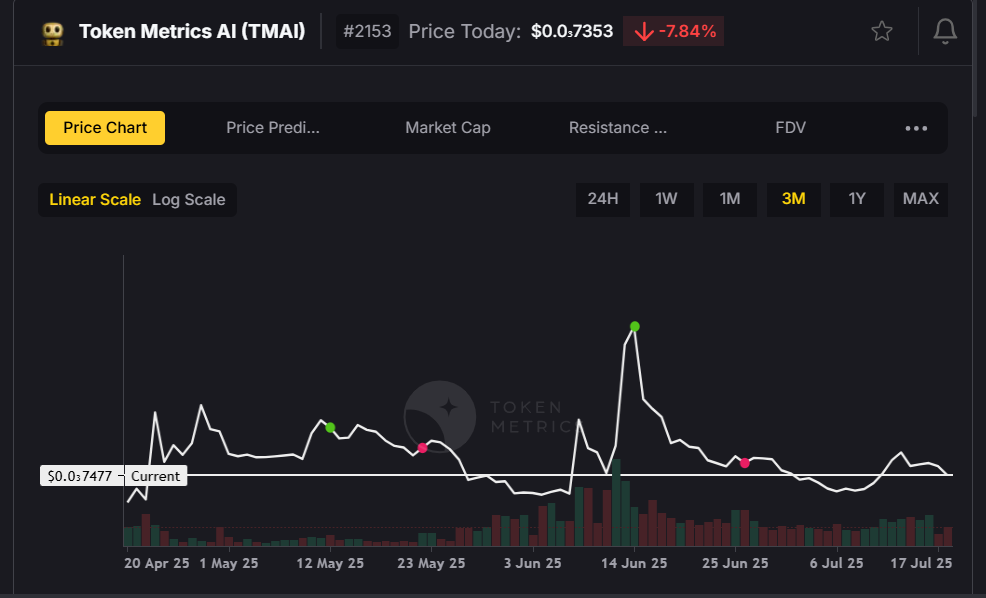
Token Metrics AI ($TMAI) stands out as a groundbreaking project that merges AI with crypto analytics to empower smarter investing decisions. This platform offers an all-in-one AI trading assistant that combines autonomous agent tooling, on-chain infrastructure, and predictive analytics. Users can stake $TMAI tokens to access features like crypto indices, research automation, and trader/investor grading systems.
The Token Metrics AI platform is particularly valuable for seasoned crypto investors and traders who rely on data-driven insights to navigate the volatile crypto market. Its integration with various tools, including Signals and Smart Agents, facilitates seamless trading and investing processes by streamlining the process of executing trades, analyzing data, and managing assets through a clear workflow. With $TMAI, users benefit from a sophisticated ecosystem designed to optimize returns and reduce the guesswork commonly associated with altcoin trading.
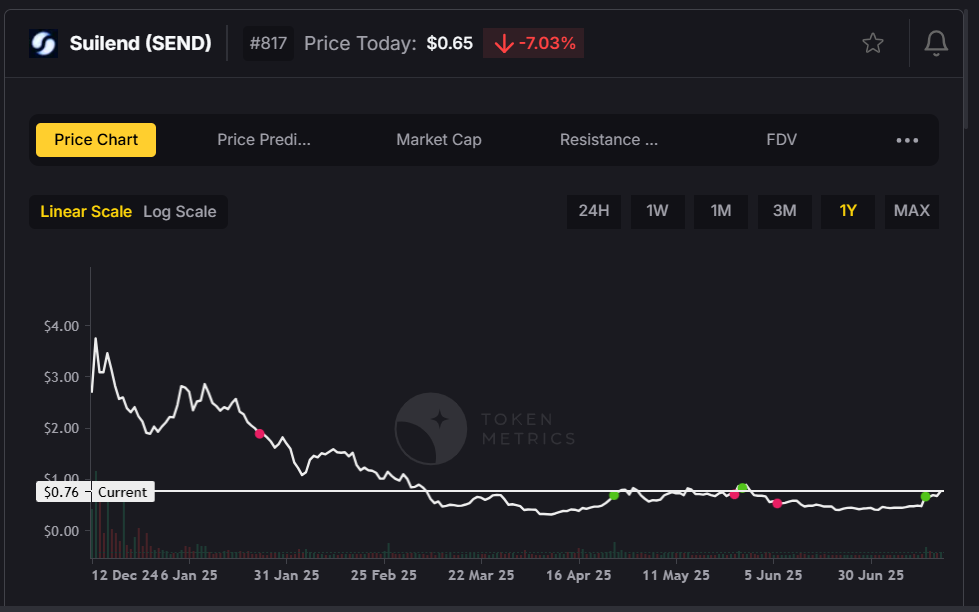
Suilend ($SEND) is a native DeFi lending protocol built on the Sui blockchain, which is gaining traction due to its low transaction fees and innovative parallel transaction processing. The platform's low fees provide a competitive advantage for users, making it especially appealing to cost-conscious traders and investors. As the Sui network expands, Suilend is positioned to capitalize on the growing demand for capital-efficient lending and borrowing services.
The platform supports Sui-native tokens, enabling users to leverage their crypto assets efficiently within a low-competition DeFi environment. This makes $SEND an attractive option for investors seeking exposure to decentralized finance with minimized transaction fees and a scalable infrastructure. Its rapid total value locked (TVL) growth underscores its rising market value and adoption.
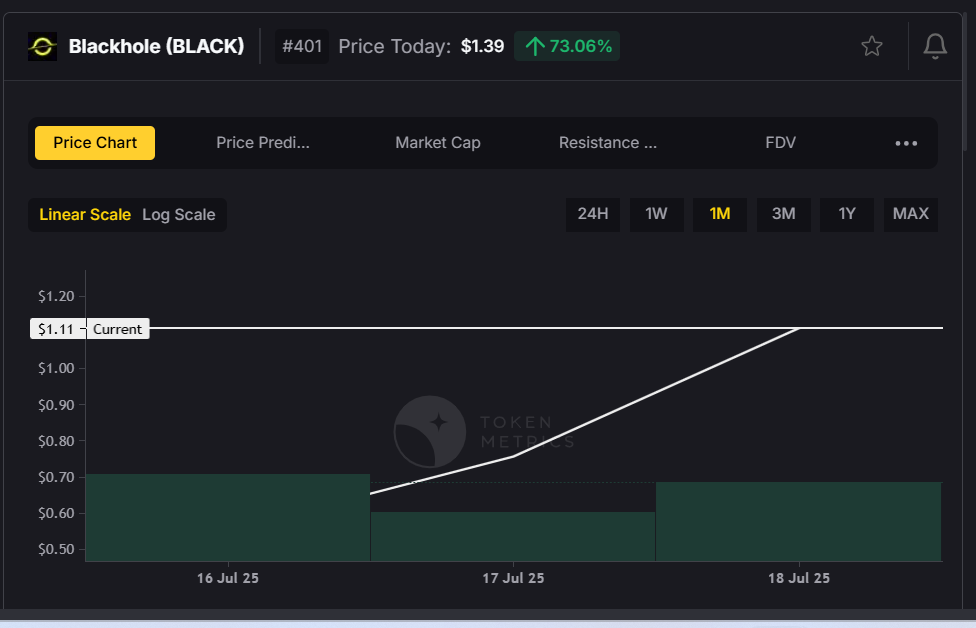
Blackhole ($BLACK) is carving a niche as a decentralized compute platform that provides GPU resources for AI, machine learning, and crypto infrastructure projects. By incentivizing GPU providers and AI developers through its native $BLACK token—the native coin of the Blackhole platform, essential for transaction fees and overall platform operations—the platform fosters a collaborative environment for decentralized AI compute sharing.
This project is pivotal for the evolving decentralized finance and AI sectors, offering a decentralized platform where compute power can be rented and shared securely. For investors interested in the intersection of AI and blockchain technology, Blackhole represents a unique asset with the potential to disrupt traditional centralized compute services.
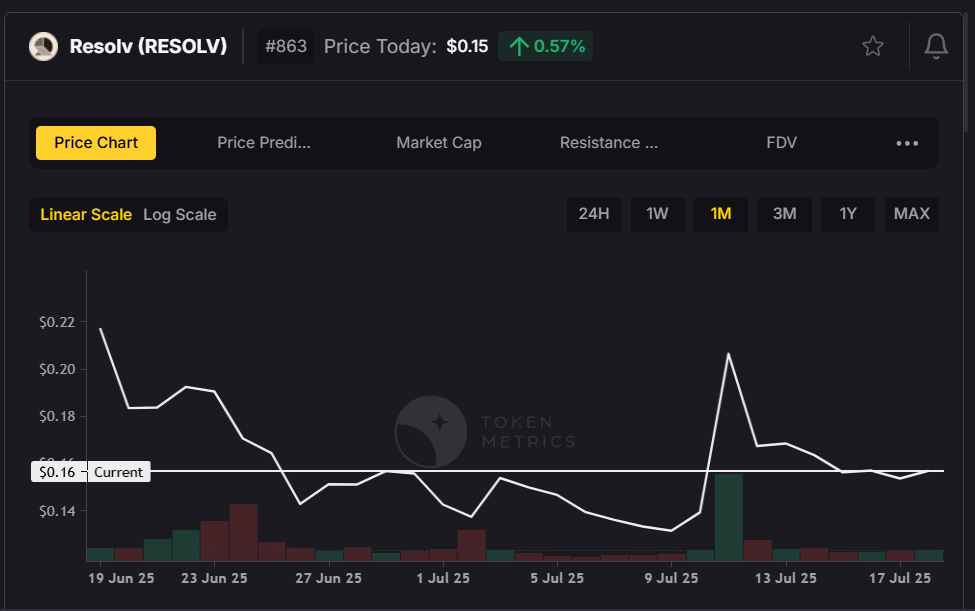
Resolv ($RESOLV) innovates at the crossroads of AI and smart legal contracts by developing AI agents that automate compliance, arbitration, and dispute resolution. This platform empowers decentralized autonomous organizations (DAOs) and dApps with tools for on-chain contract enforcement and legal agreement automation.
As regulatory scrutiny from bodies like the Securities and Exchange Commission increases, projects like Resolv that enhance legal transparency and automation are becoming essential. By integrating large language models (LLMs) into smart contracts, Resolv offers a competitive edge in the crypto space, appealing to users and investors focused on compliance and decentralized finance.
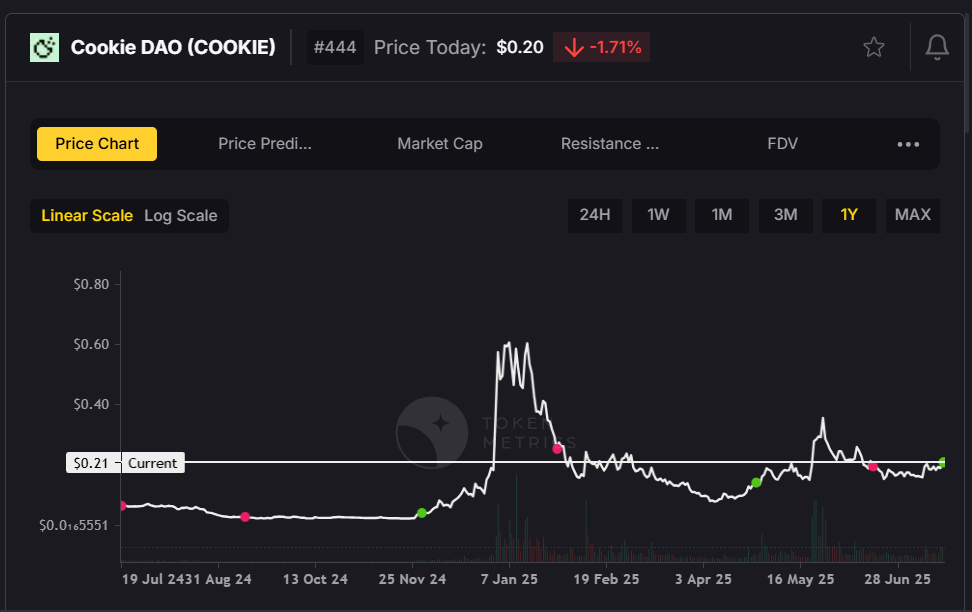
Cookie.fun ($COOKIE) blends social engagement, AI creativity, and entertainment by offering AI-generated animated content and meme NFTs. This platform leverages the virality of meme culture to create a decentralized social environment where creators and fans can monetize digital content.
The unique combination of meme NFTs and community rewards makes Cookie.fun a standout in the creator economy. For crypto enthusiasts looking to participate in the cultural side of the crypto market, $COOKIE offers a novel way to engage with digital assets while benefiting from the rise of AI-generated entertainment.
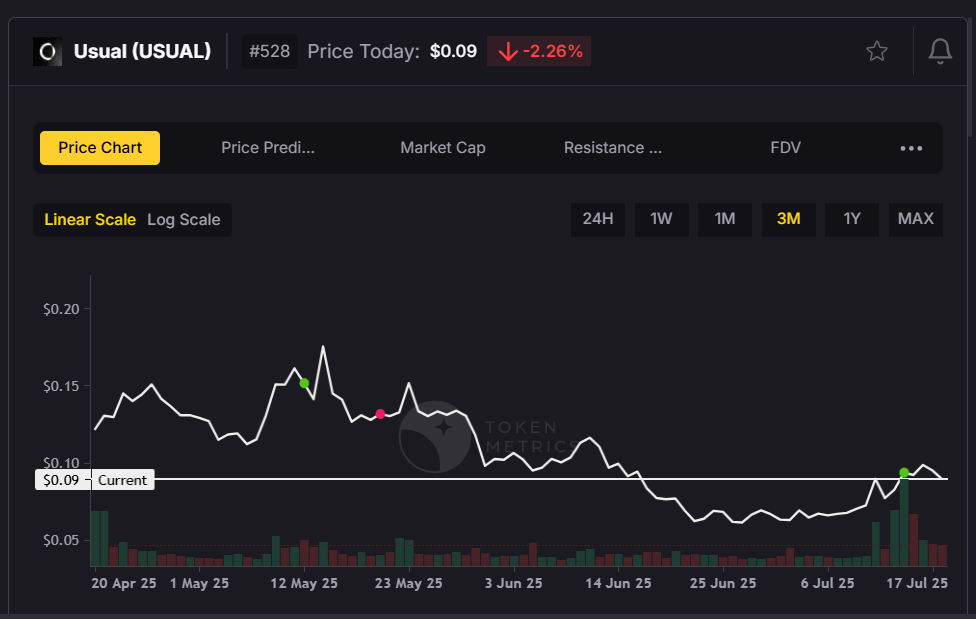
Usual Money ($USUAL) addresses the need for a user-friendly, decentralized stablecoin platform optimized for DeFi payments and yield generation. By combining a seamless user experience with smart routing for capital efficiency, Usual Money enhances the dollar experience for crypto-native users.
This platform’s focus on yield-bearing stablecoins and low transaction fees positions it well within the growing decentralized finance sector. Investors seeking stable, utility-driven tokens with real-world applications in payments and DeFi will find $USUAL an appealing asset.
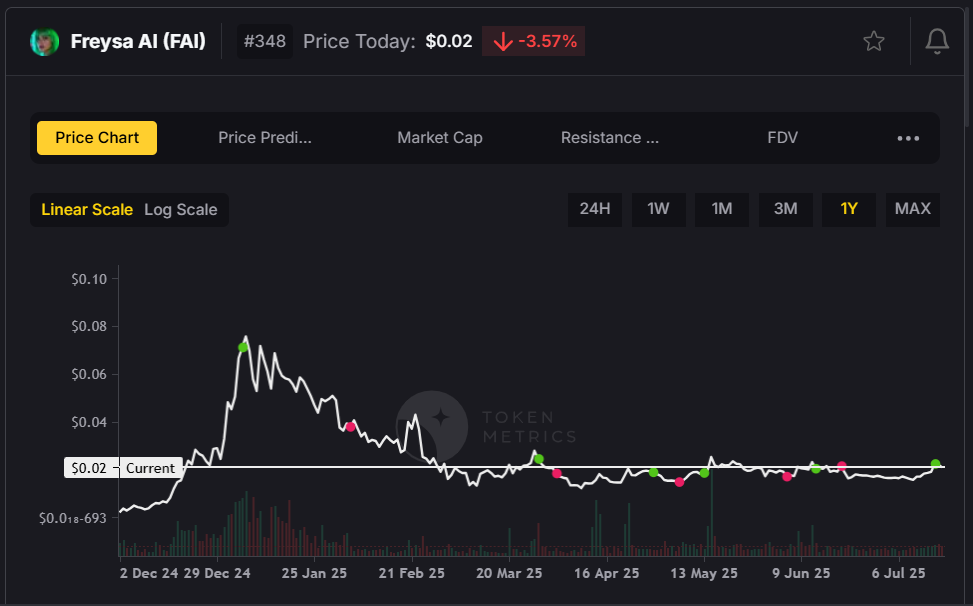
Freysa AI ($FAI) is building a decentralized framework for AI agents capable of interacting with blockchains, decentralized exchanges (DEXes), and dApps. This infrastructure supports on-chain automation and facilitates the development of crypto copilots that enhance user interaction within the crypto ecosystem.
By integrating leading AI models with on-chain APIs, Freysa AI offers a powerful toolset for developers and users aiming to streamline complex processes. Its role in decentralized AI infrastructure makes $FAI a promising token for investors focused on the future of AI-driven blockchain applications.
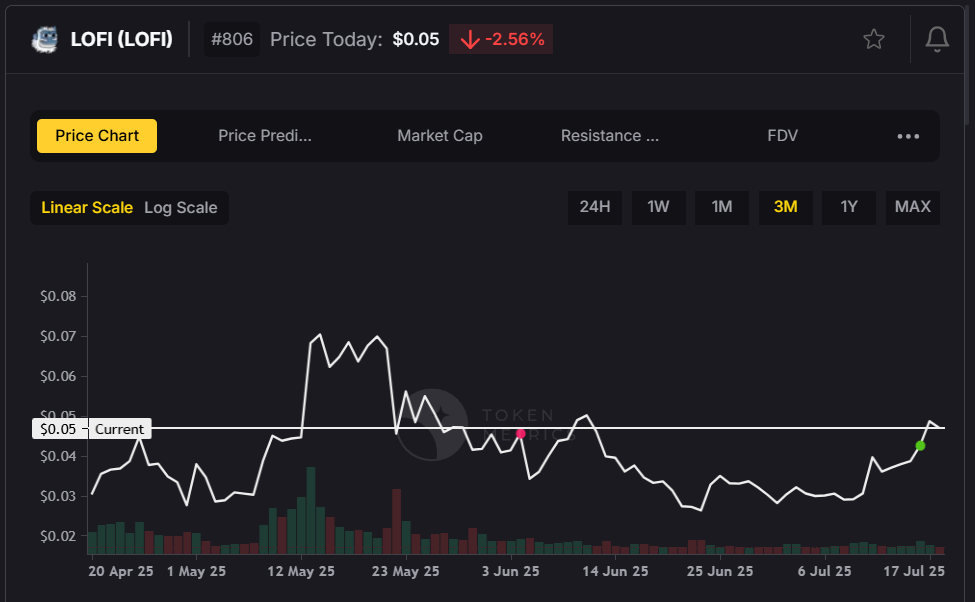
LOFI is an innovative project at the intersection of AI, music, and culture. It enables artists and fans to co-create and monetize AI-generated generative music NFTs, focusing on ambient soundscapes and fan engagement.
This platform taps into the creator economy by facilitating music royalties and fostering fan economies through blockchain technology. LOFI’s unique approach to combining generative music with NFTs offers a fresh avenue for investors interested in cultural and entertainment-related crypto assets.
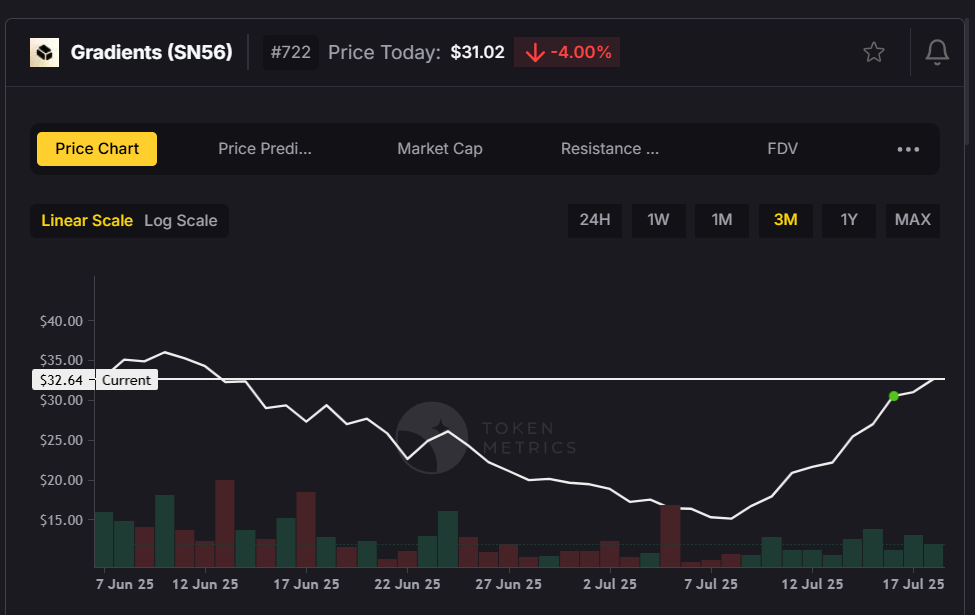
Gradients ($SN56) operates a token-incentivized data marketplace that crowdsources datasets for AI training and machine learning model development. This decentralized approach to data collection and sharing enhances the quality and accessibility of training data for AI developers.
With token-gated access to proprietary datasets, Gradients empowers users and developers to contribute to and benefit from the growth of AI capabilities. Investors focused on AI and data-driven crypto projects will find $SN56 an intriguing addition to their portfolios.
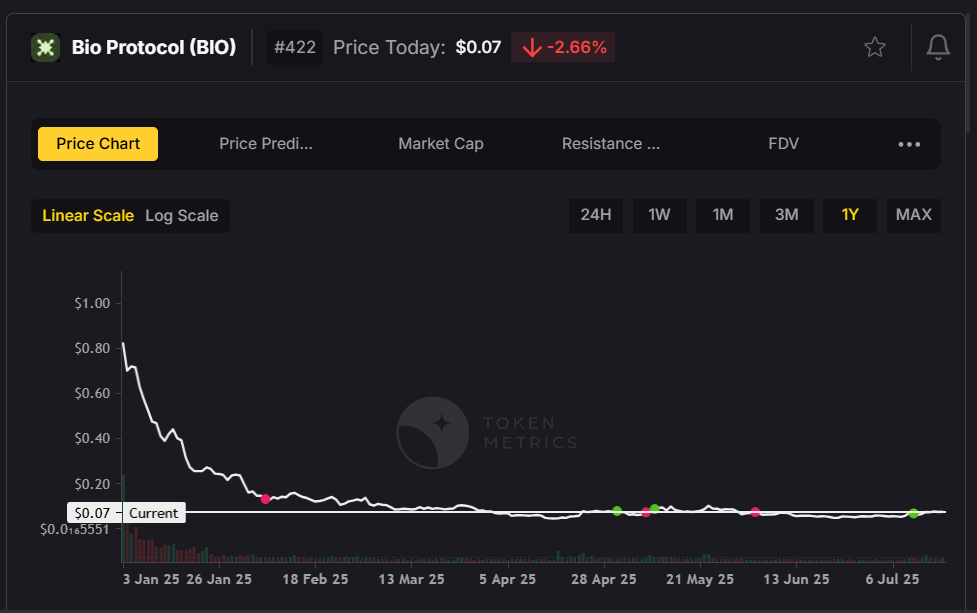
BIO Protocol ($BIO) merges biotechnology with decentralized science (DeSci) by enabling researchers and biotech firms to tokenize experiments and scientific contributions. This platform fosters on-chain reputation systems and data royalties, incentivizing scientific innovation and collaboration.
By facilitating AI-driven drug discovery and scientific data sharing, BIO Protocol addresses real-world challenges through blockchain technology. This project appeals to investors interested in the convergence of biotech, AI, and decentralized finance.
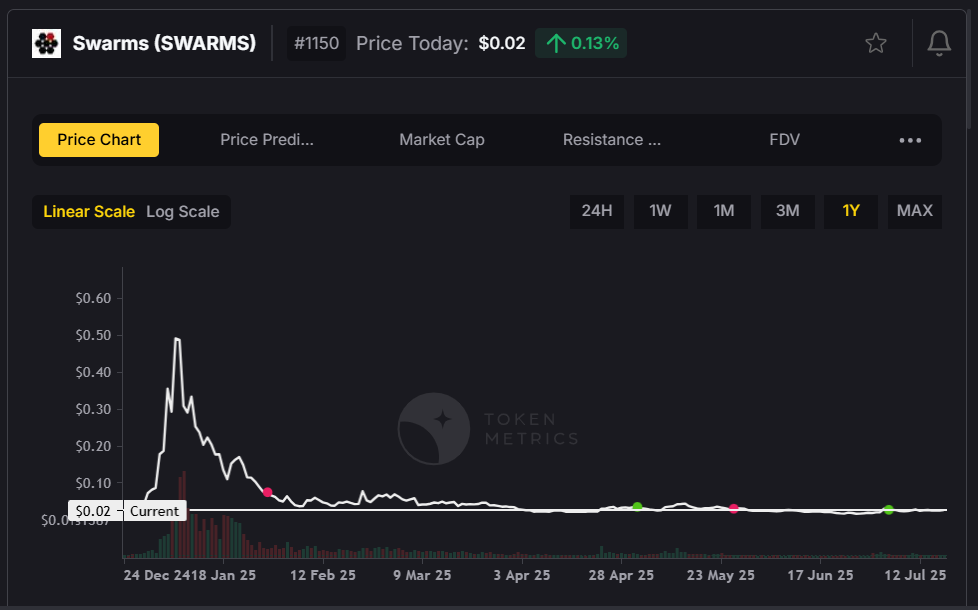
Swarms ($SWARMS) is developing an open-source protocol for multi-agent coordination across decentralized applications. This technology enables smart agents to execute complex tasks such as DAO governance, DeFi arbitrage, and airdrop farming efficiently.
The platform’s swarm AI logic supports parallelized on-chain execution, enhancing scalability and automation. For traders and investors looking at the next wave of decentralized automation, $SWARMS offers compelling utility and growth potential.
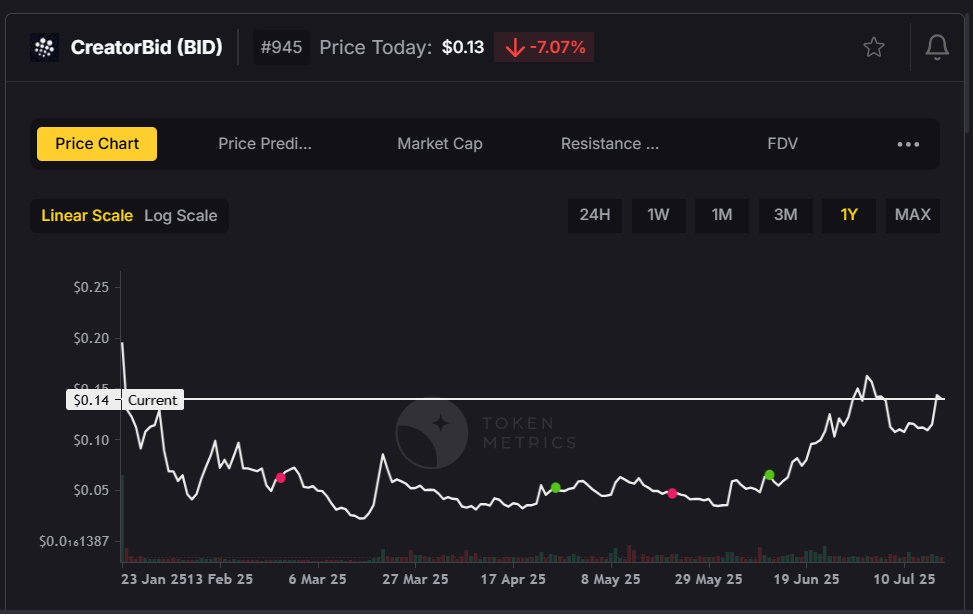
Creator.bid ($BID) is an auction platform where fans can bid on personalized content created by AI-powered influencers and creators. This project combines AI celebrity clones with fan tokens to revolutionize creator monetization.
Its auction dynamics and custom content-generation models provide a unique marketplace within the creator economy. Investors interested in AI-driven social platforms and fan engagement will find $BID an exciting asset.
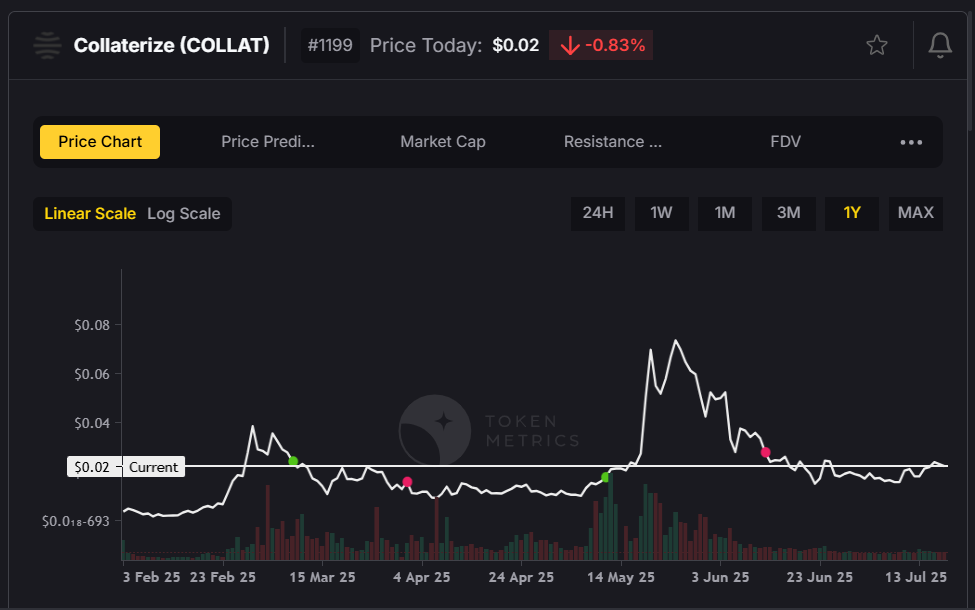
Collaterize ($COLLAT) bridges the gap between real-world assets and decentralized finance by allowing users to tokenize and collateralize assets such as invoices and real estate. This integration facilitates asset-backed lending and yield generation within DeFi.
With transparent smart contracts and real-world audits, Collaterize enhances trust and security for investors. This project is particularly appealing to those seeking exposure to real-world asset (RWA) collateralization in the crypto market.
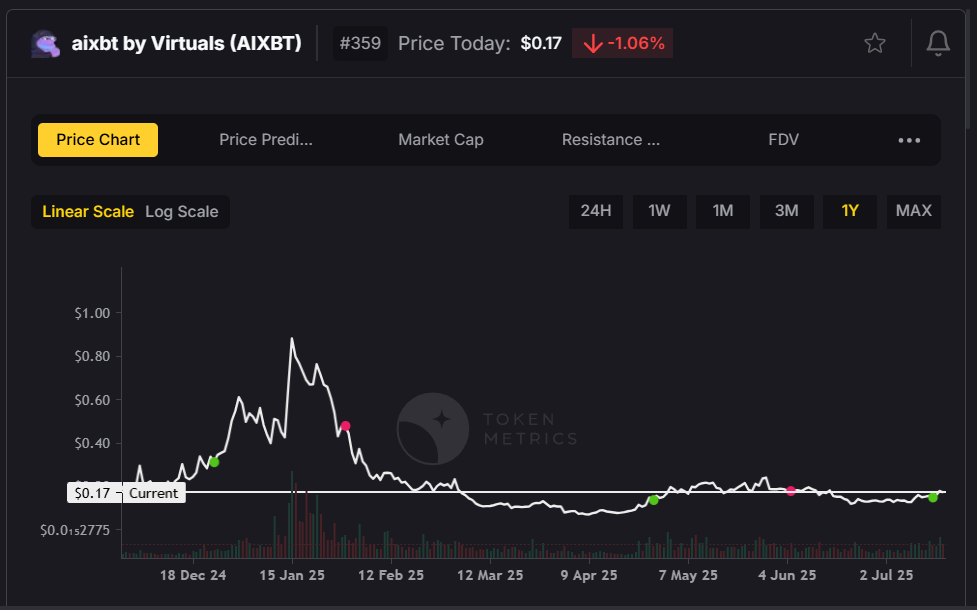
aixbt ($AIXBT) is an AI-powered trading bot platform that leverages both on-chain and off-chain data to execute autonomous crypto trading strategies. The platform enables users to trade altcoins using advanced AI-driven tools, providing flexibility and efficiency in managing a diverse portfolio. It offers real-time trade simulations and leaderboard-based strategy competitions.
This platform caters to traders looking for sophisticated, data-driven tools to navigate price fluctuations and market sentiment. $AIXBT’s innovative approach to AI trading bots makes it a valuable asset in the competitive crypto trading landscape.
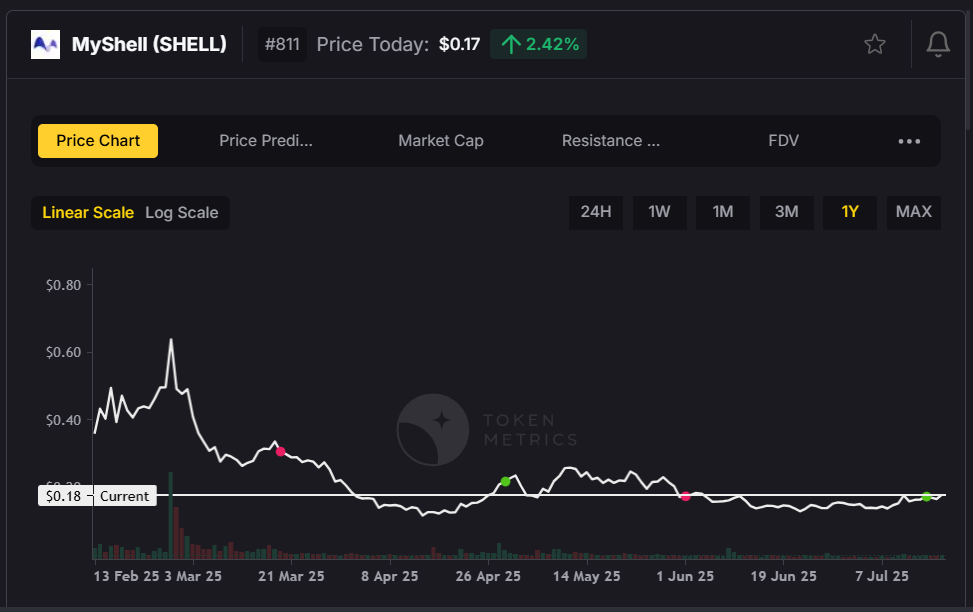
MyShell AI ($SHELL) enables users to create voice-based AI characters that operate across multiple platforms like Discord and Telegram. This project supports voice-to-earn economies and multi-platform bot deployment, enhancing user interaction and customer support.
By combining AI agents with creator studios, MyShell AI taps into the growing demand for personalized, voice-enabled digital experiences. Investors interested in AI-driven user engagement and decentralized platforms will find $SHELL noteworthy.
Trading altcoins successfully requires a solid grasp of the crypto market and its ever-changing trends. Professional traders often rely on technical analysis, chart patterns, and market indicators to anticipate price movements and make strategic trades. When trading altcoins, it’s important to consider factors such as trading fees, transaction fees, and the overall volatility of digital currencies. Understanding the underlying technology, use cases, and competitive landscape of each altcoin can provide a significant edge. Many exchanges, including industry leaders like Binance and Kraken, offer robust platforms for trading a wide variety of altcoins, making it easier for investors to access and trade these digital assets. By staying informed and leveraging the right tools, traders can navigate the complexities of the crypto market and optimize their trading strategies for better results.
Investing in altcoins presents unique challenges, including high price volatility, potential market manipulation, and evolving regulatory landscapes. Retail investors must be proactive in managing these risks by diversifying their portfolios and conducting thorough research before making any altcoin investments. Long term investments in altcoins can yield substantial rewards, but they require a deep understanding of the crypto market and its shifting dynamics. The Securities and Exchange Commission has provided guidelines to help investors navigate the regulatory aspects of cryptocurrency investing, and it’s crucial to ensure compliance with these rules. Platforms like Tron Network and Ripple Labs have introduced low-fee structures and stablecoin solutions to help mitigate some of the risks associated with trading and investing in altcoins. By understanding both the risks and potential rewards, investors can make informed decisions and confidently participate in the ever-evolving world of altcoins and digital assets.
Selecting the best crypto altcoins for 2025 requires thorough research and a strategic approach. Investors should prioritize projects with strong narratives aligned to AI, DeFi, real-world assets, and autonomous agents. Active development and vibrant communities are essential indicators of a project’s sustainability and growth potential. Monitoring new coins entering the market is important, as their supply and circulating supply can impact scarcity and value.
Real token utility and demand mechanisms, such as staking, transaction fee savings, or governance rights, add tangible value to crypto tokens. Interoperability with expanding ecosystems like Sui, Base, and Solana further enhances an altcoin’s market capitalization and market cap stability.
For many investors and traders, platforms like Token Metrics AI ($TMAI) serve as critical tools to analyze market data, track performance, and gauge market sentiment. Crypto prices are influenced by supply, demand, and trading activity, so understanding these factors is crucial for evaluating altcoins. Utilizing such resources can help navigate the complexities of the cryptocurrency market, balancing risk tolerance with the pursuit of high-reward altcoin investments.
In summary, the best crypto altcoins in 2025 are those that combine innovative technology, competitive advantages, and real-world applications within a rapidly evolving crypto ecosystem. When comparing altcoins to other cryptocurrencies, it is important to consider their performance, trading volume, and the platforms they utilize—such as the XRP ledger, which supports fast transactions and differs from traditional blockchains. How actively an altcoin is traded can also indicate its liquidity and investor interest. By staying informed and leveraging cutting-edge platforms, investors can position themselves to capitalize on the rise of new crypto assets and the next altcoin season.

%201.svg)
%201.svg)
Cryptocurrency enthusiasts constantly search for fresh and inventive approaches to maximize their digital assets and earnings. Over the past few years, staking Cardano has emerged as a popular method in this endeavor.
Staking Cardano presents an excellent opportunity for individuals interested in passive income generation. Staking involves actively contributing to a blockchain network and receiving additional cryptocurrency as a reward.
With its reputation as the "Ethereum killer," Cardano provides a dependable and secure platform for staking its native cryptocurrency, ADA.
This comprehensive guide will explore everything you need to know about Cardano staking, including what it is, how to stake it, the pros and cons, and where to do so. Let's dive in!
Cardano is a proof-of-stake (PoS) blockchain founded by Ethereum co-founder Charles Hoskinson. PoS blockchains, unlike proof-of-work (PoW) blockchains like Bitcoin, validate transactions and produce blocks through staking rather than mining.
Staking involves locking away coins in a node to validate transactions and contribute to the network's security and stability. By staking ADA, you can earn staking rewards without moving or losing your coins.
In Cardano's PoS blockchain, nodes play a crucial role in the validation process. Nodes are groups of people who have pooled their staked ADA tokens together.
The more ADA coins locked away in a node, the higher the chances of producing blocks and earning rewards. Staking pools, often operated by those with technical expertise, allow users to pool their tokens with others or run their own staking pool.
Staking Cardano is a straightforward process that can be done through reputable crypto exchanges or by staking directly with staking pool operators. Let's explore both methods.
If you prefer a user-friendly and convenient option, staking Cardano via a crypto exchange might be the right choice. Here's a step-by-step guide on how to stake Cardano via an exchange:
Staking directly with staking pool operators offers more independence and control over your assets. Here's how to stake Cardano with staking pool operators:
It's important to note that staking with staking pool operators allows you to retain full control of your funds and withdraw them at any time.
Before diving into Cardano staking, it's essential to consider the pros and cons. Let's explore the advantages and disadvantages of staking Cardano.
Pros of Cardano Staking
Cons of Cardano Staking
Despite these potential drawbacks, Cardano staking remains an attractive option for those earning passive income from their ADA holdings.
You can stake your Cardano (ADA) tokens, including popular exchanges and dedicated wallets. Let's explore some of the platforms where you can stake Cardano.
Staking on Coinbase
Coinbase, a leading cryptocurrency exchange, offers Cardano staking with an annual percentage yield (APY) of 3.75%. Here's how to stake Cardano on Coinbase:
Staking on Binance
Binance, one of the largest cryptocurrency exchanges, offers Cardano staking with an APY of up to 6.1%. Here's how to stake Cardano on Binance:
Staking on eToro
eToro, a popular social trading platform, offers automatic staking of supported cryptocurrencies, including Cardano. Here's how to stake Cardano on eToro:
While Cardano staking offers numerous benefits, knowing the associated risks is important. Here are some risks to consider before staking Cardano:
It's vital to conduct thorough research and carefully consider these risks before engaging in Cardano staking.
Q1. Is Cardano staking safe?
Yes, Cardano staking is generally considered safe. The ADA tokens used for staking never leave your wallet, and staking rewards are earned similarly to interest in a savings account. However, practicing proper wallet security measures to protect your funds is important.
Q2. Can I unstake my ADA at any time?
Yes, you can unstake your ADA anytime, but it's essential to consider the lock-up period associated with your chosen staking duration. Withdrawing your ADA before the end of the staking duration may result in losing staking rewards.
Q3. Can I stake Cardano if I don't have technical expertise?
Yes, even if you don't have technical expertise, you can stake Cardano by using reputable crypto exchanges that offer staking services. These platforms provide user-friendly interfaces that simplify the staking process.
Q4. How often are staking rewards distributed?
Staking rewards are typically distributed at the end of each epoch, which lasts approximately five days. The distribution of rewards is based on the snapshot taken at the end of each epoch, reflecting the distribution of staked ADA tokens.
Cardano staking offers a compelling opportunity to earn passive income and actively participate in the Cardano network. By staking ADA, you contribute to the network's security and stability while enjoying potentially higher yields than traditional investments.
Whether you choose to stake through exchanges or directly with staking pool operators, it's important to consider the pros and cons, research staking pools, and understand the associated risks. With this comprehensive guide, you are now equipped with the knowledge to begin your Cardano staking journey. Happy staking!
The information provided on this website does not constitute investment advice, financial advice, trading advice, or any other advice, and you should not treat any of the website's content as such.
Token Metrics does not recommend buying, selling, or holding any cryptocurrency. Conduct your due diligence and consult your financial advisor before making investment decisions.


 Create Your Free Account
Create Your Free Account9450 SW Gemini Dr
PMB 59348
Beaverton, Oregon 97008-7105 US
.svg)




.png)
Token Metrics Media LLC is a regular publication of information, analysis, and commentary focused especially on blockchain technology and business, cryptocurrency, blockchain-based tokens, market trends, and trading strategies.
Token Metrics Media LLC does not provide individually tailored investment advice and does not take a subscriber’s or anyone’s personal circumstances into consideration when discussing investments; nor is Token Metrics Advisers LLC registered as an investment adviser or broker-dealer in any jurisdiction.
Information contained herein is not an offer or solicitation to buy, hold, or sell any security. The Token Metrics team has advised and invested in many blockchain companies. A complete list of their advisory roles and current holdings can be viewed here: https://tokenmetrics.com/disclosures.html/
Token Metrics Media LLC relies on information from various sources believed to be reliable, including clients and third parties, but cannot guarantee the accuracy and completeness of that information. Additionally, Token Metrics Media LLC does not provide tax advice, and investors are encouraged to consult with their personal tax advisors.
All investing involves risk, including the possible loss of money you invest, and past performance does not guarantee future performance. Ratings and price predictions are provided for informational and illustrative purposes, and may not reflect actual future performance.



